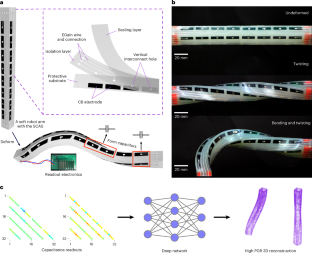EPFLの研究者は、炭酸カルシウムを生成するバクテリアを含むインクを3Dプリントする方法を発表しました。3Dプリントされた鉱化生体複合体は、これまでにない強度を持ち、軽量で、環境に優しく、芸術から生物医学まで幅広い応用が可能です。 EPFL researchers have published a method for 3D-printing an ink that contains calcium carbonate-producing bacteria. The 3D-printed mineralized bio-composite is unprecedently strong, light, and environmentally friendly, with a range of applications from art to biomedicine.
2023-02-23 スイス連邦工科大学ローザンヌ校(EPFL)
◆工学部のソフトマテリアル研究室の研究者たちは、その解決策を自然界に求めました。このバクテリアは、尿素を含む溶液にさらされると、炭酸カルシウム(CaCO3)を生成する鉱化プロセスを誘発するのです。つまり、研究者らは、「BactoInk」と名付けたこのインクを使って、ほぼすべての形状を3Dプリントし、数日間かけて徐々に鉱物化させることができる。
◆著者は、小さな鉱物粒子を含む3D印刷インクは、以前はこれらの流動性基準のいくつかを満たすために使用されていましたが、得られた構造体は柔らかく、乾燥時に収縮する傾向があり、最終製品の形状に亀裂を生じ、制御不能になることがあると説明しています。
◆そこで、鉱物を印刷する代わりに、「バクトインク」を使ってポリマーの足場を印刷し、それを別の工程で鉱化するというシンプルな方法を考えつきました。約4日後、足場内のバクテリアによって引き起こされるミネラル化プロセスによって、90%以上のミネラル含有量を持つ最終製品が完成した。
◆その結果、強度と弾力性のある生体複合材料ができあがりました。この複合材料は、標準的な3Dプリンターと天然素材を使用して製造でき、セラミックの製造にしばしば必要とされる極端な温度も必要ありません。最終製品は、無機化プロセスの最後にエタノールに浸漬されるため、もはや生きた細菌を含んでいません。
◆この方法は、バクテリアを使って鉱化を誘導する初の3Dプリント用インクを説明するもので、このほど学術誌『Materials Today』に掲載されました。
◆ソフトマテリアル研究所のアプローチは、アートやエコロジーから生物医学まで、幅広い分野への応用が期待されている。バクトインクは、花瓶のひびや彫像の欠けなどの型に直接注入することもでき、美術品の修復が非常に容易になるとAmstadは考えている。このインクの機械的特性は、美術品の修復に必要な強度と耐収縮性をもたらし、修復過程での損傷を防ぐことができます。
◆また、環境に優しい材料のみを使用し、鉱物化したバイオコンポジットを作ることができるため、傷ついたサンゴ礁を再生させる人工サンゴの材料としても期待されています。さらに、このバイオコンポジットの構造と機械的特性が骨の構造を模倣していることから、将来の生物医学的な応用につながる可能性もあります。
<関連情報>
- https://actu.epfl.ch/news/3d-printing-with-bacteria-loaded-ink-produces-bone/
- https://www.sciencedirect.com/science/article/pii/S1369702123000214
生体構造バイオコンポジットの3Dプリンティング 3D printing of living structural biocomposites
Matteo Hirsch, Lorenzo Lucherini, Ran Zhao, Alexandra Clarà Saracho, Esther Amstad
Materials Today Available online: 18 February 2023
DOI:https://doi.org/10.1016/j.mattod.2023.02.001

Abstract
Nature fabricates organic/inorganic composites under benign conditions, yet, in many cases, their mechanical properties exceed those of the individual building components it is made from. The secret behind the evolutionary pivot is the unique ability of nature to control structure and local composition of its materials. This tight control is often achieved through compartmentalization of the reagents that can be locally released. Inspired by nature, we introduce an energy-efficient process that takes advantage of the compartmentalization to fabricate porous CaCO3-based composites exclusively comprised of nature-derived materials whose compressive strength is similar to that of trabecular bones. The unique combination of nature-derived materials, 3D printability, and good mechanical properties is achieved through the formulation of these materials: We combine microgel-based granular inks that inherently can be 3D printed with the innate potential of engineered living materials to fabricate bacteria-induced biomineral composites. The resulting biomineral composites possess a porous trabecular structure that comprises up to 93 wt% CaCO3 and thereby can withstand pressures up to 3.5 MPa. We envisage this system to have the potential to be used in art restoration, serve as artificial corals to help the regeneration of marine reefs, and, with additional work, might even allow the reparation of broken or partially disintegrated natural mineral-based materials such as certain parts of bones.



